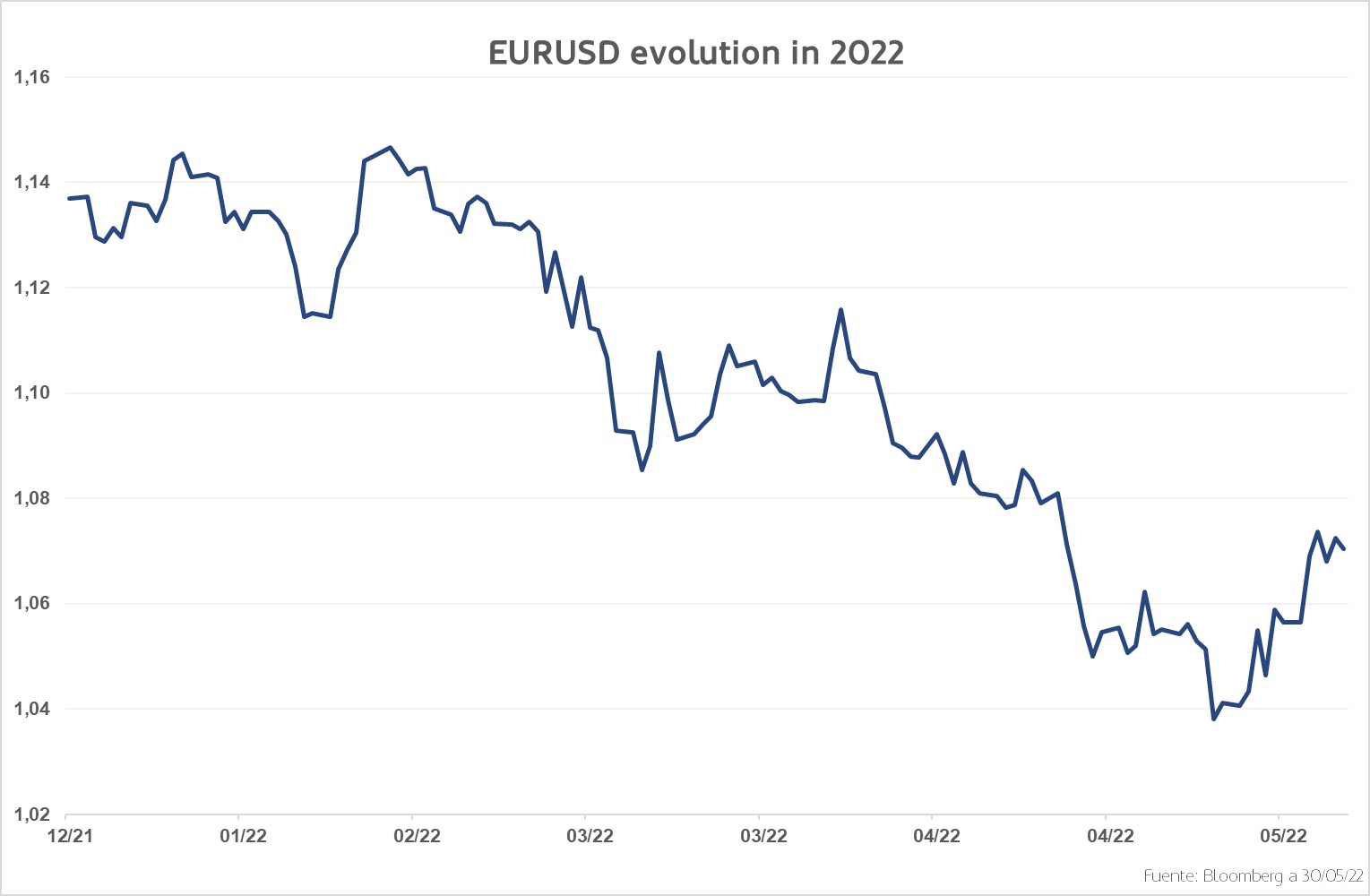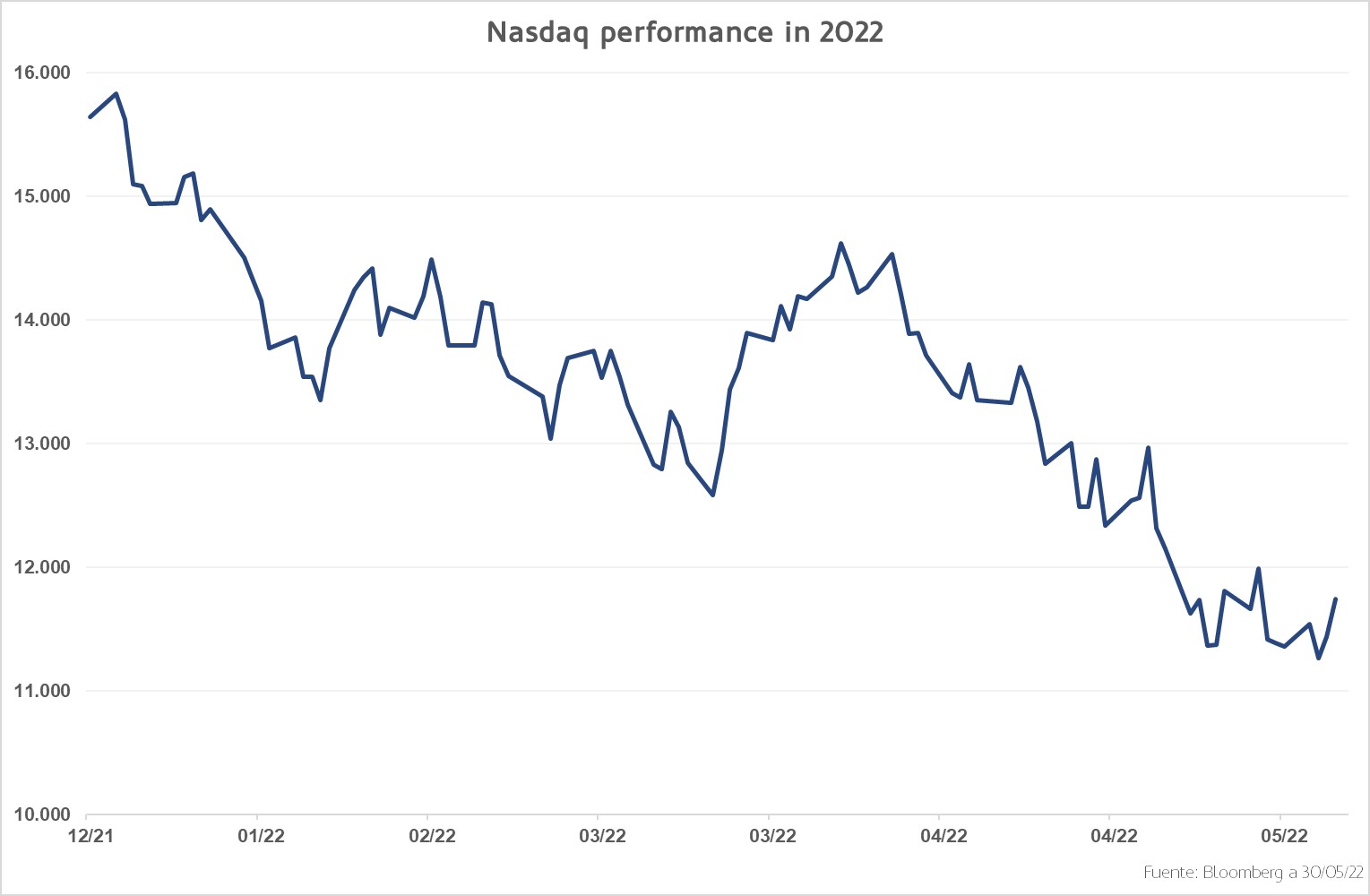Inflation anticipates the ECB’s plans
1 June de 2022
Inflation anticipates the ECB’s plans

-
The European Central Bank seeks to step on the accelerator
Various members of the ECB and its President, Christine Lagarde, have significantly toughened their discourse with regard to the speed of the rise in interest rates planned for this year and designed to combat high inflation, which recorded a year-on-year 7.5% in the euro area on 18 May.
The market is taking the first rise in eight years in July for granted, in keeping with Lagarde’s statements, which would position the rates in positive territory by the end of the third quarter of the year.
The clearest reflection of this change has been the rapid appreciation of the euro which, after a continuous loss of value against the dollar during 2022, has risen sharply in recent sessions, with an upturn in its price from 1.035 to over 1.07 in just one week.

Bloomberg 30/05/2022
-
Fiscal policy remains lax
The European Commission has proposed extending the suspension of the EU’s Stability and Growth Pact rules by one year. This agreement commits the member States to maintaining sound public finances, materialising in ensuring maximum figures of 3% of public deficit and 60% of public debt as percentages of GDP.
The Pact was temporarily suspended from 2020 to 2022, due to the budgetary needs caused by the pandemic, but high inflation, the delicate economic situation aggravated by the conflict in Ukraine and the latest outbreaks of coronavirus have made it necessary to extend the exemption to 2023.
This measure will serve to buy time now that the monetary policy assistance is being reduced, but at a cost of worsening public finances.
-
Market sentiment continues to weigh down on equities
Pessimism has continued to beset the movement of equities in recent weeks, on this occasion hampering the US market more than the European one. This correction has not been homogeneous, as it has affected the technological and discretionary consumption sectors to a greater extent.
The performance of the Nasdaq is an excellent example of the above, as it’s currently trading at around 30% down so far this year. As we’ve remarked on previous occasions, this can largely be explained by the shift of the main economies towards a tighter monetary policy, although there have also been moments of high volatility generated by the disappointing corporate results of some companies, despite the positive overall balance in the first quarter.

Bloomberg 30/05/2022
#MoraBancExperts



